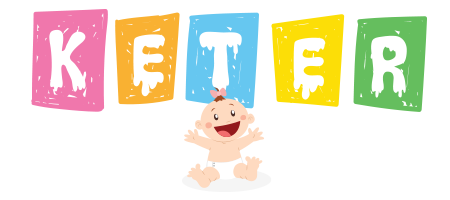
Sleep Time
The safest place for a child to sleep is on the back, in a crib, cot or crib. Health Canada recommends sharing rooms during your baby's first 6 months of life
Infants and young children should never sleep on standard beds, waterbeds, air mattresses, sofas, futons or armchairs. The child may suffocate when sleeping on these types of surfaces. Follow these safety tips to reduce the risk of injury or death when using these products.
- Never put a child to sleep in the same sleeping area as another adult or child.
- Never put children and toddlers in hammocks. Infants placed on soft sheets, including hammocks, may become entangled in positions where they cannot breathe.
- Dress children in sleeping clothes that meet flammability requirements. Avoid putting children to bed in daywear or clothing with loose laces or belts.
- Toys with batteries should not be taken to bed with a child.
General Safety Tips
- Use plastic safety covers on electrical outlets to prevent children getting their fingers or metal objects in them. Make sure these covers are secure to avoid choking.
- Make sure that plastic bags are kept out of the reach of children to prevent suffocation.
- Make sure water sources, such as hot tubs, swimming pools, pools and SPAs, are not accessible to children.
- Make sure that furniture, such as a wall unit, bookcase or porcelain cabinet, is securely attached to the wall. Televisions should be placed on the lowest possible furniture. Use corner struts or anchors to attach the furniture to the wall. Children can climb on these objects and cause them to fall on them, which can lead to death.
- Scan your house from the child's point of view; crawl on the hands and knees to identify the potential danger, then eliminate the danger.
- Keep in mind that not everyone will take the same precautions as you do to ensure that the area is safe and secure for children. Always look after children closely.
- Prevent falls, cuts and other injuries by paying attention to a child placed in a shopping cart. Children should remain seated and unwrapped while in the shopping cart.
- Installation and maintenance of smoke detectors. Check that they work according to the manufacturer's recommendations.
- Keep cords of electrical appliances such as fryers, kettles, steam irons and toasters away from children. If you remove the device from the counter, you could be injured or burned.
- Place a barrier around a gas or wooden fireplace or wood stove to prevent children from touching hot surfaces and getting burned. Fireplace and wood stove doors can become very hot during and after use.
- Supervise children at play and teach them how to use toys safely.
- Keep small toys, balls, or small loose parts of toys out of sight and reach for children under 3 years of age or older who keep putting toys in their mouths. The little things can be turned off.
- Repair or dispose of weak or broken toys - often check for hazards such as loose parts, broken pieces, or sharp edges.
- Keep all toys, especially plush and soft toys, away from heat sources such as stoves, fireplaces, and stoves.
- Avoid toys with laces, especially those that are stretched long enough to wrap around the baby's neck.
- Do not use toys that make loud noises, as the noise can damage your child's hearing. If you have to yell to hear the sound of a toy, it's probably too loud for the baby and you shouldn't use it.
Ride-On Toys
Check that toys like rattles and teethers have handles or parts that are large enough so they will not get stuck in an infant's throat and block their airway.
Keep in mind that a child in a toy car on wheels can move quickly. This toy should be used away from hazards such as light bulbs, cables, ornaments or devices that could be hit or pulled by a child.
- Choose a ride-on toy that suits the child's age, size, and abilities.
- Check that the ride-on toy will not tip when the child is using it.
- Use of a ride-on toy should be far away from stairs, traffic, swimming pools, and other dangerous areas.
Toys with Batteries
Make sure batteries in toys are not accessible to the child.
- Adults must install batteries. Improper installation or combination of different types of batteries can cause them to leak or overheat, resulting in personal injury.
- Your baby shouldn't be lying with the toys that have batteries. Overheating can cause injuries.
- Call your doctor or poison control center right away if a child swallows a battery. Batteries can be poisonous.
- Small disk batteries (button cells) can cause internal injury or serious death if swallowed. If a child has ingested a lithium coin cell battery, seek medical attention immediately.
Toys with Magnets
Products with power magnets stored in bulk must be protected from children. They are used in a wide range of products, from jewelry, clothing accessories and household items to children's products such as construction toys or scientific instruments. Small and strong magnets that are loose or in a very small object are dangerous because they can be easily swallowed.
If more than one magnet is ingested in a short period of time, they may be attracted to each other through the intestines, slowly creating a blockage or tearing of the intestinal wall. The results can be fatal.
